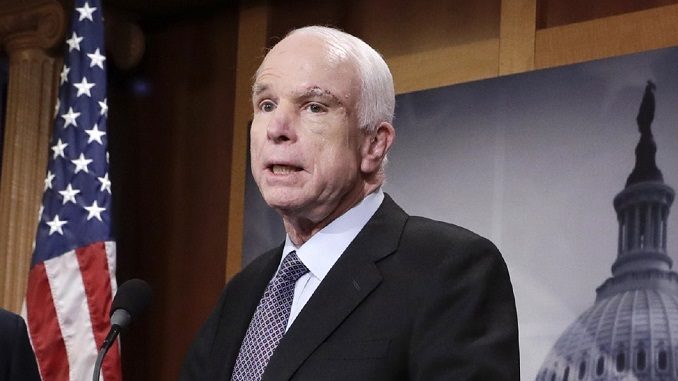
A $700 billion defense bill was passed on Thursday by the Senate, in response to President Donald Trump’s call for a stronger military. However, it remains unclear how exactly it would be funded considering the Republican push for tax cuts.
The annual National Defense Authorization Act was passed by a voice vote of 356-70, without debate of objections, sending it to Trump’s desk to sign it. On Tuesday, lawmakers, led by the chairman of the Senate Armed Services John McCain and House Armed Services Chairman Mac Thornberry, came to an agreement regarding the differences in the House and Senate versions, before passing the defense bill.
The NDAA, however, does not comply with the 2011 Budget Control Act spending caps, so it may never be funded. The Budget Control Act allows for $549 billion for purchasing weapons and paying troops, while the 2018 NDAA surpasses this limit, authorizing $634 billion in base defense spending.
The sequestration caps of the act do not include special war funding, while the NDAA does – $66 billion for Pentagon’s Overseas Contingency Operations. It also includes $20.6 billion for nuclear national security programs under the Energy Department.
Despite the drastic increase, lawmakers authorized billions more in order to advance research and development as well as to build up the Army and Marine Corps. This also covers the administration’s request for another $6 billion in missile defense against North Korea and more troops in Afghanistan, among other things.
After the vote, McCain suggested that the bipartisan support shows the budget caps are “unacceptable” and cannot finance the military.
“Nearly two months into Fiscal Year 2018, we cannot delay any longer in appropriating these vital, additional resources for our military,” he said. McCain also called on Trump to sign the bill into law and thus “acknowledge that this is the level of defense spending necessary to meet current threats and prepare for the challenges of an increasingly dangerous world.”

Be the first to comment